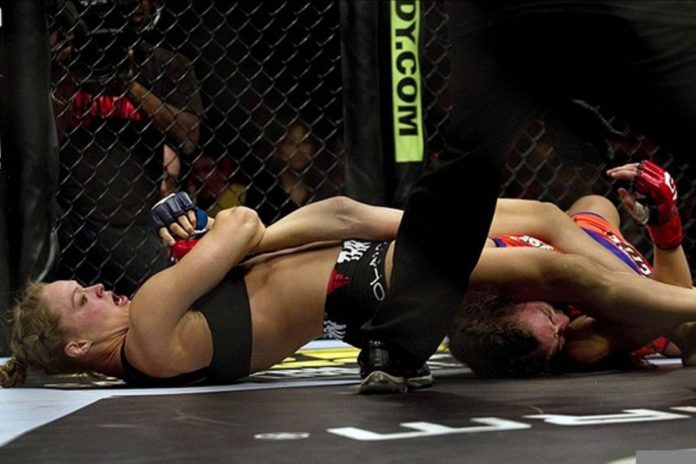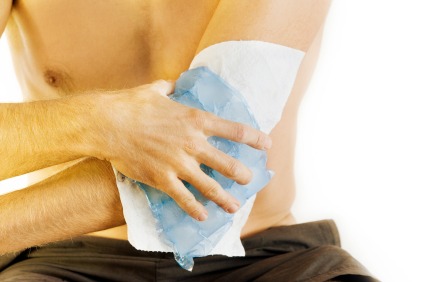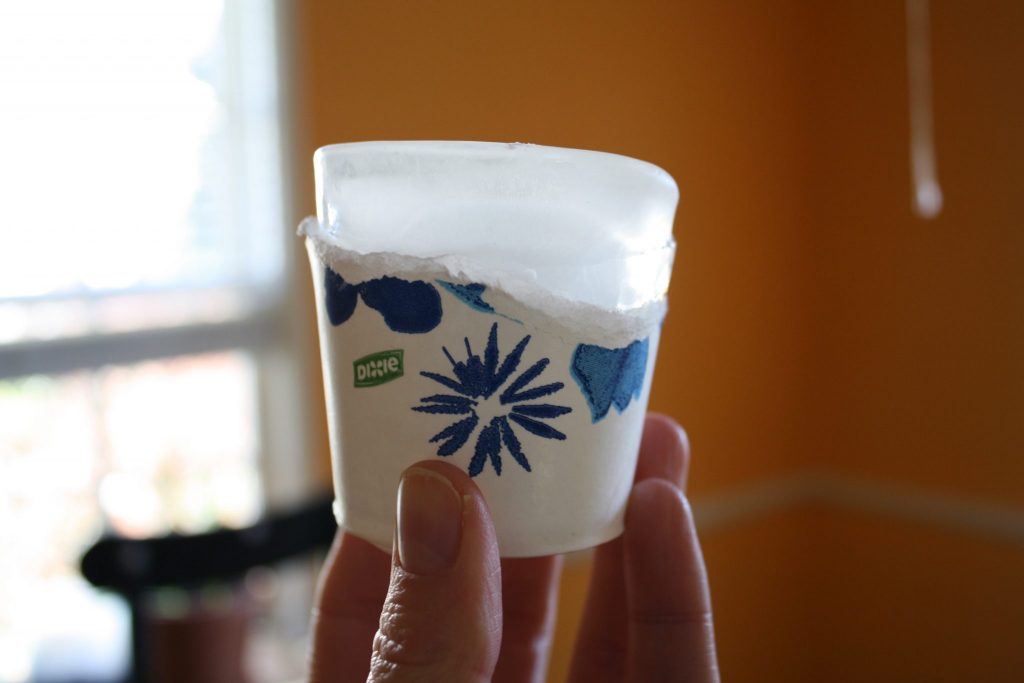
No matter which sport you’re involved in, the potential for injuries is there. Every sport brings unique injury risks to the table, depending on the environment it takes place in. With combat sports, the potential for injuries is even more pronounced. Combat sports result in injuries at quite a high rate both when training and in competition. And grappling martial arts hold the title for the highest rate of injuries among combat sports. It is the nature of Brazilian Jiu-Jitsu and other grappling arts, where people are in constant contact while changing the planes where the action takes place. Add to that the goal of controlling and ultimately submitting an unwilling opponent and you’ve got a recipe for disaster. While Jiu-Jitsu injuries are very common, some are specific to the sport as wearing a Gi is. One of those injuries is hyperextension of the elbow joint.
The elbow joint is not a particularly strong joint. Its anatomical position puts it in a position to be a frequent subject of Jiu-Jitsu injuries. As such it is not only submissions that put the elbow at risk. Of course, armbar attempts, especially belly-down, are the top contender for causing an elbow injury in grappling. However, Jiu-Jitsu injuries to the elbow can occur in many situations that arise, from takedowns to transitions and positional battles. As such, re-injuring an elbow can result in a significant time off from training or even the risk of a chronic ailment. This is just one of the reasons why Jiu-Jitsu injuries need to be taken seriously and treated properly.
Preventing Hyperextension Jiu-Jitsu Injuries
Some of the most common Jiu-Jitsu injuries are “joint hyperextensions”. This type of injury occurs when a joint, in our case an elbow, is pushed beyond its normal range of motion. Since a key principle of Jiu-Jitsu is to attack the weak points in the body, this joint usually receives a lot of attention.
In Brazilian Jiu-Jitsu joint manipulations are constantly the subject of classes. Factors such as experience, movement, and/or improper technique can cause injuries to you or your training partner. Injuries are a fact of Jiu-Jitsu life. After all, the more you sweat in practice, the less you bleed in combat. At least in theory.
First and foremost, never go all out on your partner right from the beginning. Grapplers need to work in a spirit of cooperation in order to keep each other safe. Staying injury-free in a sport that is based on joint destruction has to be the focus. Keep your ego in check and never try to show your stuff on someone who is willingly rolling or drilling with you. It is not only dangerous but it goes against the character of grappling in essence.
Dealing With A Hyperextended Elbow
Now, having said that, accidents do happen. Often, when an elbow is stressed, tendons begin to stretch. If pushed harder, they begin to tear. When an elbow joint tears, all you’ll hear is some “popping sounds”, very similar to when you crack your knuckles. Your partner, on the other hand, might not feel something is wrong immediately. This is because tendons are very weakly innervated and pain perception is low in these areas.
However, within a minute or so, when the arm is back to its normal range of motion, you’ll notice changes. Primarily, there’ll be an apparent lack of movement followed by weakness and a “dull ache”. This dull pain gets more pronounced and worse as time goes by.
When this inevitably happens to you, ice the spot immediately for 10 minutes. The cold will cause the swelling to go down. Next, you’ll want to keep it immobilized. Over-the-counter painkillers (the likes of Ibuprofen) will definitely help. Keep in mind, however, that painkillers help with the pain, not the injury itself.
Do not be tempted to go straight back to training after downing a pill or two or you’ll just exaggerate the problem. If the elbow is tweaked or torn, you’ll need to lay off the Jiu-Jitsu for a while. Depending on the severity of the injury, this could mean up to a month off. While this can seem like an eternity you need to let the body start to heal itself.
Another great supplement for joint problems is something called glucosamine. Glucosamine is a precursor for glycosaminoglycans, which are the building blocks of joint cartilage. Supplemental glucosamine may help to rebuild cartilage, treat arthritis, or aid in joint repair. It can be bought virtually anywhere.
An Alternative Approach To Healing
Another remedy, this one of a more natural kind is called hydrotherapy. Hydrotherapy uses ice as the main tool for repair. And no, you won’t need to visit a specialist. You can do it yourself in the comfort of home. What you’ll need are Dixie cups, water, a topical painkiller, a dish towel, and some cling wrap.
Take some Dixie cups and fill them with water. Place them in the freezer and let them freeze. Take a Dixie cup out of the freezer and tear about 25% of the cup so the ice is exposed. Rub the cup over the injured area until the ice melts down. Next, use your thumb to push and massage the injured area. You need to really dig deep, pushing hard in order to relieve the pain. After a few minutes place some topical painkiller on the site. Repeat the procedure daily, for the duration of a week.
At night, wet a dish towel and place it in the freezer. Before you turn in for the day, wrap the frozen towel around your elbow. Proceed to wrap cling wrap around the towel, so it stays in place during the night. Your arm will go numb after about 5 minutes. Expect to wake up a few hours later and feeling like your elbow is on fire. This is because the body has been rushing blood to the affected area in order to warm it up.
Best Methods OF taping Your Injured Fingers: https://bjj-world.com/best-bjj-finger-tape/
There is a perfectly sound explanation behind this method. The body’s best defense against injuries is to flush the area with blood. The cold/hot hydrotherapy speeds up and maximizes the body’s natural healing system. It is a proven way of getting your Jiu-Jitsu injuries to heal up faster.
Coming back to training after an elbow injury
Even after you come back to training you have to be pretty careful with your elbow joint and you have to make sure that you’ll do every precaution measure that needs to be done. Make sure you buy a tight elbow compression sleeve or compressions sleeve with pads like Elbow protection pads. This way you’ll make sure your arm is more secured from sudden blows or unwanted extension that could hurt your elbow even more.


![Darce Choke Encyclopedia – Origins, Mechanics and Variations [2025] BJJ, choke, Brabo, BJJ Darce Choke, D'arce Choke, Darce BJJ Choke](https://bjj-world.com/wp-content/uploads/2017/11/JungPoirierLeeYahoo-218x150.jpg)











![Closet Closed Guard Craig Jones DVD Review [2025] Closet Closed Guard Craig Jones DVD Review](https://bjj-world.com/wp-content/uploads/2025/03/closet-closed-guard-craig-jones-dvd-review-218x150.png)
![Xanadu Back Takes Levi Jones-Leary DVD Review [2025] Xanadu Back Takes Levi Jones-Leary DVD Review](https://bjj-world.com/wp-content/uploads/2025/03/xanadu-back-takes-levi-jones-leary-dvd-review-218x150.png)

![No-Gi Grapplers Guide To Front Headlock Joel Bane DVD Review [2025] No-Gi Grapplers Guide To Front Headlock Joel Bane DVD Review](https://bjj-world.com/wp-content/uploads/2025/03/no-gi-front-headlock-joel-bane-dvd-review-218x150.png)

![Get Off My Legs Gringo Craig Jones DVD Review [2025] Get Off My Legs Gringo Craig Jones DVD Review](https://bjj-world.com/wp-content/uploads/2025/03/get-off-my-legs-gringo-craig-jones-dvd-review-218x150.png)
![How to Double Leg Anyone Kevin Lee DVD Review [2024] How to Double Leg Anyone Kevin Lee DVD Review](https://bjj-world.com/wp-content/uploads/2024/11/how-to-double-leg-anyone-kevin-lee-dvd-review-324x235.png)

![Just Pass Jay Rodriguez DVD Review [2024] Just Pass Jay Rodriguez DVD Review](https://bjj-world.com/wp-content/uploads/2024/11/just-pass-jay-rodriguez-dvd-review-100x70.png)



![Zen Guide To Submission Grappling Margot Ciccarelli DVD Review [2025] Zen Guide To Submission Grappling Margot Ciccarelli DVD Review](https://bjj-world.com/wp-content/uploads/2025/02/submission-grappling-margot-ciccarelli-dvd-preview-100x70.png)
![A Blueprint For Smeshing Khabib Nurmagomedov DVD Review [2024] A Blueprint For Smeshing Khabib Nurmagomedov DVD Review](https://bjj-world.com/wp-content/uploads/2024/10/blueprint-for-smeshing-khabib-nurmagomedov-dvd-review-100x70.png)



![Henry Akins Black Hole No-Gi Closed Guard DVD Review [2024] Henry Akins Black Hole No-Gi Closed Guard DVD Review](https://bjj-world.com/wp-content/uploads/2024/09/henry-akins-black-hole-no-gi-closed-guard-dvd-review-100x70.png)
![Efficiently Executing X-Guard Giancarlo Bodoni DVD Review [2024] Efficiently Executing X-Guard Giancarlo Bodoni DVD Review](https://bjj-world.com/wp-content/uploads/2024/09/efficiently-executing-x-guard-giancarlo-bodoni-dvd-REVIEW-100x70.png)





![Breaking Their Guard Mikey Musumeci DVD Review [2025] Breaking Their Guard Mikey Musumeci DVD Review](https://bjj-world.com/wp-content/uploads/2025/02/breaking-their-guard-mikey-musumeci-dvd-review-100x70.png)
![Simplify the System Side Scissor Brian Glick DVD Review [2024] Simplify the System Side Scissor Brian Glick DVD Review](https://bjj-world.com/wp-content/uploads/2024/09/side-scissor-brian-glick-dvd-review-2024-100x70.png)


![Master The Move The American Lock John Danaher DVD Review [2024] Master The Move The American Lock John Danaher DVD Review](https://bjj-world.com/wp-content/uploads/2024/12/the-american-lock-john-danaher-dvd-review-100x70.png)
![Effectively Passing The Guard Luke Griffith DVD Review [2025] Effectively Passing The Guard Luke Griffith DVD Review](https://bjj-world.com/wp-content/uploads/2025/01/passing-the-guard-luke-griffith-dvd-review-100x70.png)


![Leg Lock Strategies: Navigating Entanglements Jack Stapleton DVD Review [2024] Leg Lock Strategies: Navigating Entanglements Jack Stapleton DVD Review](https://bjj-world.com/wp-content/uploads/2024/12/navigating-entanglements-jack-stapleton-dvd-review-100x70.png)
![Compass Kneebar System Charles Harriott DVD Review [2024] Compass Kneebar System Charles Harriott DVD Review](https://bjj-world.com/wp-content/uploads/2024/11/compass-kneebar-system-charles-harriott-dvd-review-100x70.png)